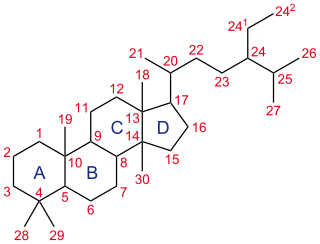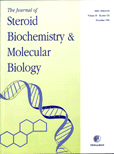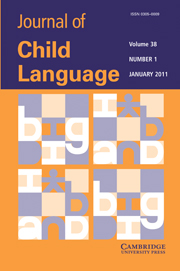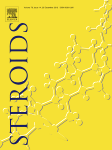
Endocrinology is a branch of biology and medicine dealing with the endocrine system, its diseases, and its specific secretions known as hormones. It is also concerned with the integration of developmental events proliferation, growth, and differentiation, and the psychological or behavioral activities of metabolism, growth and development, tissue function, sleep, digestion, respiration, excretion, mood, stress, lactation, movement, reproduction, and sensory perception caused by hormones. Specializations include behavioral endocrinology and comparative endocrinology.

Non-steroidal anti-inflammatory drugs (NSAID) are members of a therapeutic drug class which reduces pain, decreases inflammation, decreases fever, and prevents blood clots. Side effects depend on the specific drug, its dose and duration of use, but largely include an increased risk of gastrointestinal ulcers and bleeds, heart attack, and kidney disease.

A steroid is a biologically active organic compound with four rings arranged in a specific molecular configuration. Steroids have two principal biological functions: as important components of cell membranes that alter membrane fluidity; and as signaling molecules. Hundreds of steroids are found in plants, animals and fungi. All steroids are manufactured in cells from the sterols lanosterol (opisthokonts) or cycloartenol (plants). Lanosterol and cycloartenol are derived from the cyclization of the triterpene squalene.

Tetrahydrogestrinone (THG), known by the nickname The Clear, is a synthetic and orally active anabolic–androgenic steroid (AAS) which was never marketed for medical use. It was developed by Patrick Arnold and was used by a number of high-profile athletes such as Marion Jones, Barry Bonds, and Dwain Chambers.

Nandrolone, also known as 19-nortestosterone, is an androgen and anabolic steroid (AAS) which is used in the form of esters such as nandrolone decanoate and nandrolone phenylpropionate. Nandrolone esters are used in the treatment of anemias, cachexia, osteoporosis, breast cancer, and for other indications. They are not used by mouth and instead are given by injection into muscle or fat.
Neurosteroids, also known as neuroactive steroids, are endogenous or exogenous steroids that rapidly alter neuronal excitability through interaction with ligand-gated ion channels and other cell surface receptors. The term neurosteroid was coined by the French physiologist Étienne-Émile Baulieu and refers to steroids synthesized in the brain. The term, neuroactive steroid refers to steroids that can be synthesized in the brain, or are synthesized by an endocrine gland, that then reach the brain through the bloodstream and have effects on brain function. The term neuroactive steroids was first coined in 1992 by Steven Paul and Robert Purdy. In addition to their actions on neuronal membrane receptors, some of these steroids may also exert effects on gene expression via nuclear steroid hormone receptors. Neurosteroids have a wide range of potential clinical applications from sedation to treatment of epilepsy and traumatic brain injury. Ganaxolone, a synthetic analog of the endogenous neurosteroid allopregnanolone, is under investigation for the treatment of epilepsy.

17α-Hydroxyprogesterone (17α-OHP), also known as 17-OH progesterone (17-OHP), or hydroxyprogesterone (OHP), is an endogenous progestogen steroid hormone related to progesterone. It is also a chemical intermediate in the biosynthesis of many other endogenous steroids, including androgens, estrogens, glucocorticoids, and mineralocorticoids, as well as neurosteroids.

Bullous pemphigoid is an autoimmune pruritic skin disease which typically occurs in people aged over 60, that may involve the formation of blisters (bullae) in the space between the epidermal and dermal skin layers. It is classified as a type II hypersensitivity reaction, which involves formation of anti-hemidesmosome antibodies, causing a loss of keratinocytes to basement membrane adhesion.

Trenbolone is an androgen and anabolic steroid (AAS) of the nandrolone group which itself was never marketed. Trenbolone ester prodrugs, including trenbolone acetate and trenbolone hexahydrobenzylcarbonate, are or have been marketed for veterinary and clinical use. Trenbolone acetate is used in veterinary medicine in livestock to increase muscle growth and appetite, while trenbolone hexahydrobenzylcarbonate was formerly used clinically in humans but is now no longer marketed. In addition, although it is not approved for clinical or veterinary use, trenbolone enanthate is sometimes sold on the black market under the nickname Trenabol.

Quinbolone, sold under the brand names Anabolicum and Anabolvis, is an androgen and anabolic steroid (AAS) which was previously marketed in Italy. It was developed by Parke-Davis as a viable orally administered AAS with little or no liver toxicity.

Flutamide, sold under the brand name Eulexin among others, is a nonsteroidal antiandrogen (NSAA) which is used primarily to treat prostate cancer. It is also used in the treatment of androgen-dependent conditions like acne, excessive hair growth, and high androgen levels in women. It is taken by mouth, usually three times per day.
Endocrinology is a peer-reviewed scientific journal published by The Endocrine Society. It is the Society's oldest journal and was established in 1917. It covers research on all aspects of endocrinology, including growth factors, steroids, the thyroid, and physiology. According to the Journal Citation Reports, the journal had a 2021 impact factor of 5.051. Its current editor-in-chief is Dr. Carol A. Lange, a Professor in the Departments of Medicine and Pharmacology at the University of Minnesota Masonic Cancer Center.
Environmental Science: Processes & Impacts is a monthly peer-reviewed scientific journal covering all aspects of environmental science. It is published by the Royal Society of Chemistry and Kris McNeill is the editor-in-chief. The journal was established in 1999 as the Journal of Environmental Monitoring and obtained its current title in 2013.

Anabolic steroids, also known as anabolic-androgenic steroids (AAS), are synthetic substances that mimic the effects of testosterone, the male sex hormone. They are used to increase muscle size, strength, and performance and are commonly associated with athletic performance enhancement and bodybuilding. Anabolic steroids are classified as Schedule III controlled substances in many countries due to their potential for abuse and adverse health effects.

The Journal of Steroid Biochemistry and Molecular Biology is a peer-reviewed scientific journal, covering all aspects of steroid metabolism. It was established in the 1969 as Journal of Steroid Biochemistry and obtained its current name in 1990. The editor-in-chief is Jerzy Adamski. According to the Journal Citation Reports, the journal has a 2021 impact factor of 5.011.

The Journal of Child Language is a peer-reviewed academic journal covering all aspects of the scientific study of language behavior in children, the principles which underlie it, and the theories which may account for it. This includes various aspects of linguistics such as phonology, phonetics, morphology, syntax, vocabulary, semantics, pragmatics, and sociolinguistics. Its editor-in-chief is Heike Behrens. It was established in 1974 with David Crystal as its founding editor. The journal is published by Cambridge University Press and is the official journal of the International Association for the Study of Child Language.

Benorterone, also known by its developmental code name SKF-7690 and as 17α-methyl-B-nortestosterone, is a steroidal antiandrogen which was studied for potential medical use but was never marketed. It was the first known antiandrogen to be studied in humans. It is taken by mouth or by application to skin.
The South African Journal of Botany is a bimonthly peer-reviewed scientific journal covering all aspects of botany as related to Southern Africa. It is published by Elsevier on behalf of the South African Association of Botanists, of which it is an official journal. It was established in 1982 and, after publishing 3 volumes, absorbed the Journal of South African Botany as of 1985. The latter journal had been established in 1935 and the merged journal continued the volume numbering of the older one. According to the Journal Citation Reports, the journal has a 2013 impact factor of 1.340.

Chloroethynylnorgestrel is a steroidal progestin of the 19-nortestosterone group related to norgestrel that was investigated as an oral contraceptive in the 1970s but was never marketed.
Ganugapati Sree Rama Subba Rao is an Indian natural product chemist and a former chair of the department of sciences at the Indian Institute of Science (IISc). He is known for his researches on dihydroaromatics obtained through Birch reduction of aromatic compounds and is an elected fellow of the Indian National Science Academy, and the Indian Academy of Sciences. The Council of Scientific and Industrial Research, the apex agency of the Government of India for scientific research, awarded him the Shanti Swarup Bhatnagar Prize for Science and Technology, one of the highest Indian science awards, in 1982, for his contributions to chemical sciences.















